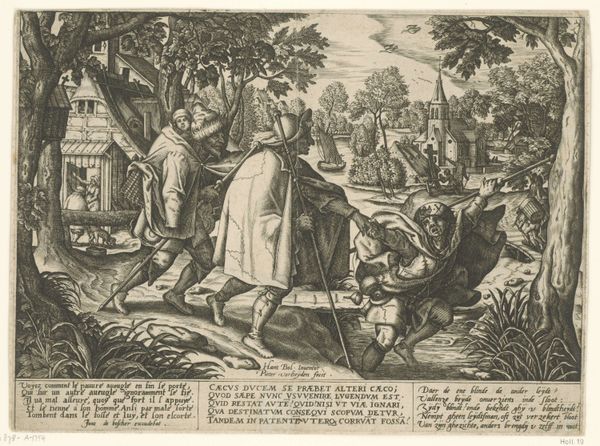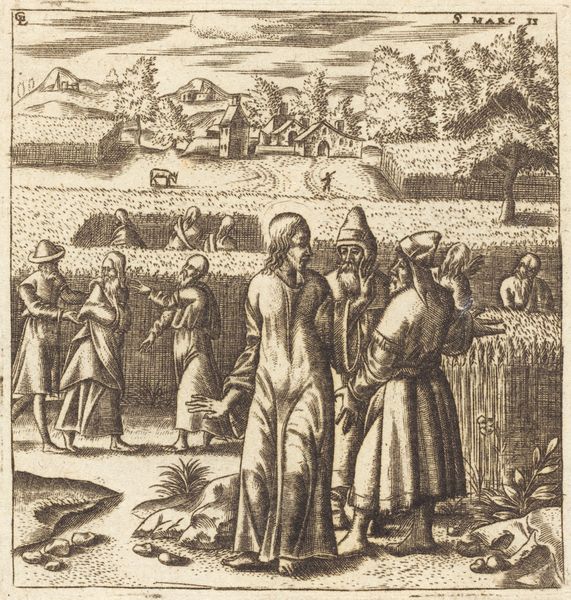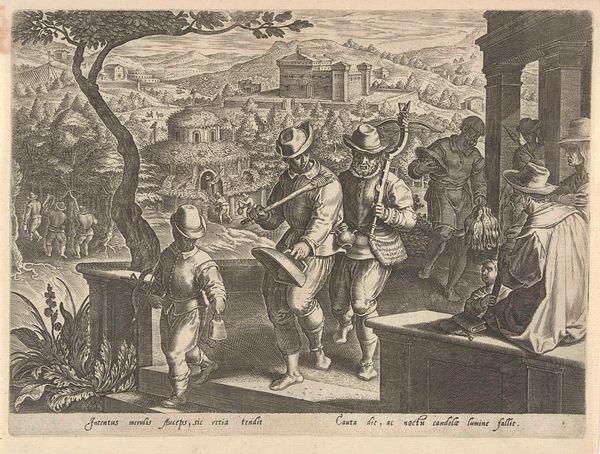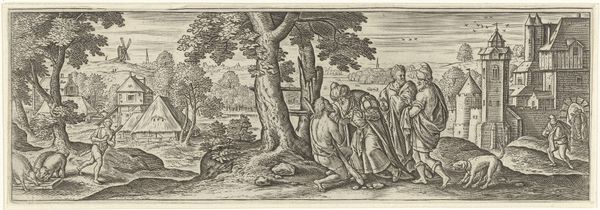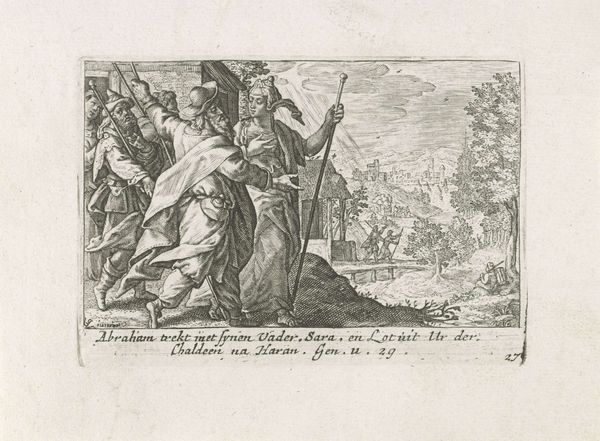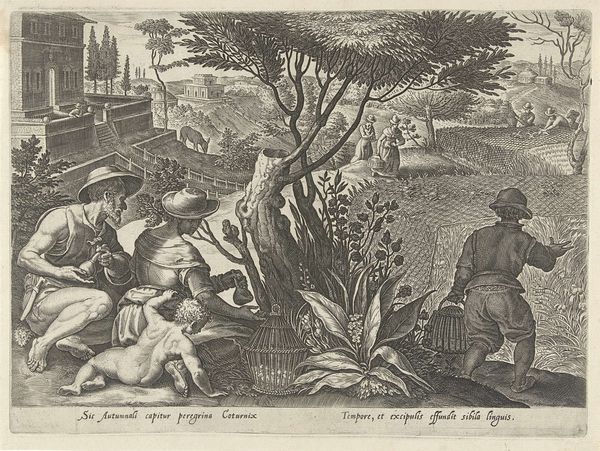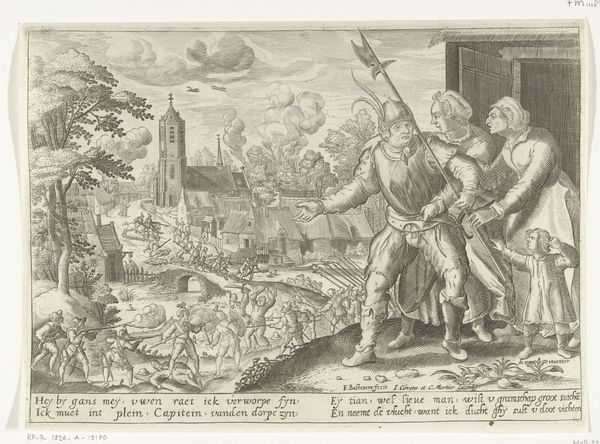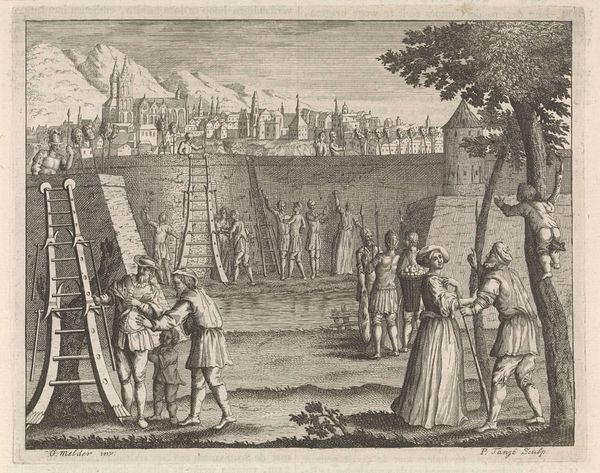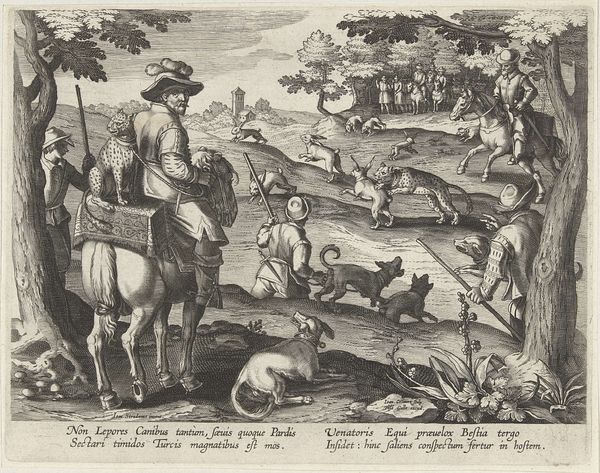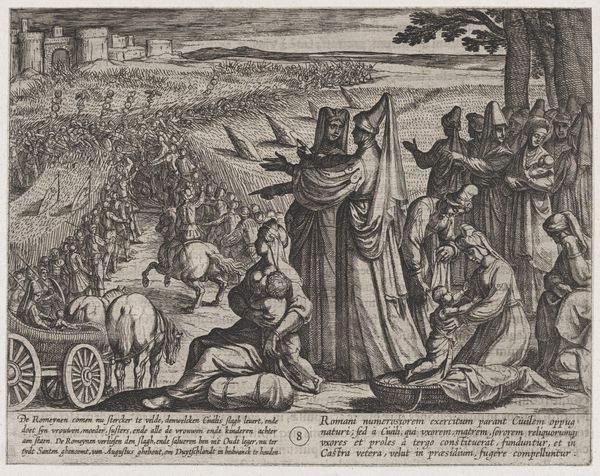
print, etching, engraving
#
narrative-art
#
baroque
# print
#
etching
#
old engraving style
#
figuration
#
genre-painting
#
history-painting
#
engraving
Dimensions: height 88 mm, width 136 mm
Copyright: Rijks Museum: Open Domain
Curator: Here we have Jacob van der Heyden’s “Vrouwenfuik,” created in 1608, an engraving which exemplifies the artistic trends and societal preoccupations of the Baroque era. Editor: My immediate response is discomfort. The woman trapped inside that contraption...it feels like a literal and figurative cage of early modern anxieties. The details feel meticulously etched, making the scene feel even more oppressive. Curator: Absolutely. Van der Heyden presents us with a "women's fish trap," or "Vrouwenfuik," if you will. The print makes visible prevailing attitudes concerning female sexuality, societal control, and moral rectitude within 17th-century Europe. We observe various figures orchestrating this spectacle, each playing a crucial role in the theatricality of the image. Editor: And let's unpack who's present. A clergyman figure oversees the operation; behind him, some elders are watching, nodding perhaps in approval. A person appears to be tightening or moving the 'trap'. It’s an incredibly literal depiction of power dynamics. Is the 'trap' an assertion of the dangers and deviance of the feminine, the role of men is to 'capture', "correct", or cage what threatens the status quo? Curator: The "trap," as you mentioned, can be seen as a complex metaphor for institutional power, where mechanisms such as the church, laws, and social norms serve to control and confine women within set parameters. It serves to examine how dominant ideologies affect our cultural discourse and perception of marginalized people. Editor: Looking closely, I notice some inscription or text in the artwork, adding to the narrative. Curator: Yes. The presence of inscriptions alongside the image augments its intended message, thus serving both to label the figures but also reinforce the overarching moral lesson for those viewing the scene. Consider how engravings, as easily reproducible media, greatly contributed to spreading ideas during this period. The use of allegories was instrumental for artists wishing to promote specific perspectives. Editor: Seeing it laid bare like this...it's a stark reminder of the artistic ways of how women's bodies and freedoms have historically been policed and continues today through diverse cultural and political forms. "Vrouwenfuik" doesn't feel like a relic; it echoes loudly even now. Curator: Precisely. Analyzing pieces such as these invites reflection about society itself. Even in this detailed engraving, the social codes which shape—and occasionally imprison—individuals can become more tangible and open to critical consideration.
Comments
No comments
Be the first to comment and join the conversation on the ultimate creative platform.
